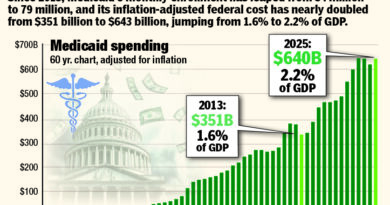Test Scores Reveal the Impact of Teacher Union-Driven Lockdowns on Students’ Education

Many children across America are still not recovering from the educational setbacks caused by school closures during the pandemic. This is the key takeaway from the latest “nation’s report card,” the National Assessment of Educational Progress, for 2024.
In fact, reading scores declined from 2022 to 2024, marking the most disappointing results since the inception of NAEP testing in 1992.
These NAEP exams, administered to a significant number of fourth- and eighth-grade students nationwide every two years, reveal that one-third of children failed to demonstrate the “basic” reading skills expected for their age group.
Only the highest-performing students appear to be making up for the ground lost during the COVID lockdowns, resulting in a widening “achievement gap” for lower-performing students.
This trend persists despite nearly $200 billion in federal funding provided in recent years intended to help public schools recover from the disruptions.
The outlook for math is similarly bleak, with eighth-grade scores having dropped over the last two years; while fourth-graders showed minor improvements compared to 2022, they still fall short of pre-pandemic levels, with gains concentrated among high-achieving students.
Two pertinent observations:
- Catholic schools across the country experienced no significant learning losses during COVID, likely due to their quicker reopening compared to public schools.
- The duration of public school closures directly correlated with the political influence of local teacher unions.
Additionally, truancy rates have increased nationally post-COVID, as many students have lost the routine of attending school.
In New York, state Comptroller Thomas DiNapoli raised concerns last year, noting that nearly one-third of students in the Empire State are now chronically truant.
Some will argue that this situation could be remedied simply by increasing funding for public education.
However, New York state currently spends over $36,000 per public-school student—far more than any other state—yet these students rank only in the middle tier on the NAEP and other national assessments.
The issue lies not in the amount spent, but in the allocation of those funds.
In New York, the State Education Department’s approach to the truancy crisis has been to discontinue reporting on chronic absenteeism.
We support public education, which is why we consistently criticize the State Education Department for undermining it and local teachers’ unions for prioritizing their interests over those of the students. We also strongly advocate for charter schools, which primarily operate outside the influence of teacher unions.
Team Trump and national Republicans are championing school choice as the optimal solution to America’s education crisis.
We concur, as it seems to be the sole approach to reclaiming our children’s education from the entities that are driving it into decline.



